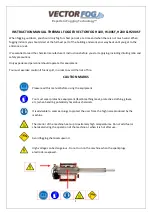
The OSPF standard does not provide guidance for metric selection or
assignment. The easiest way to assign metrics is on the basis of link speed.
Table A shows one possible scheme for selecting metrics based on link
speed.
Each link in the network is assigned a cost (metric). In figure 2 the cost from
router 1.1.1.1 to net 8 is the sum of the costs for net 4, net 1, net 11, net 10,
and net 8. Assuming costs are assigned in accordance with table A, the cost
of the route from router 1.1.1.1 to net 8 is thus 110 + 40 + 40 + 40 + 10 = 240.
Notice that the shortest path is not necessarily the one with the fewest num-
ber of hops, but rather the one with the lowest metric.
Link-State Protocol
When OSPF is started, usually during the router’s boot procedure, it begins
by synchronizing its database with those of its neighbor routers. Afterwards
each router infrequently (at 30-minute intervals) floods LSAs (link-state
advertisements) to all other routers in its area. Flooding is a way to send a
message that will be relayed by all routers receiving the message. Received
LSAs are used to build and maintain a topological database from which each
router builds its routing table. There are several types of LSAs. Consider the
network in figure 2. Each router in area 1.0.0.0 sends a router links LSA to all
other routers in area 1.0.0.0 at 30-minute intervals or whenever a link state
changes. The router links LSA includes the Router_ID of the router that
originated the message (called the advertising router) and a description of
each of the links connected to it. Link descriptions vary by the type of
connected network. However, in this example the information in the LSA
about a synchronous link includes:
IP address of the link.
Subnet mask used on the link.
The router ID of the remote end router.
The type of the link (point-to-point).
Metric or cost assigned to the link.
Like the routers in area 1.0.0.0, routers in area 2.0.0.0 flood router-links
advertisements to the other routers in area 2.0.0.0.
A
p
p
li
c
a
ti
o
n
N
o
te
s
/
C
a
s
e
S
tu
d
ie
s
3
Routing with OSPF
Routing Improvements
3-75
Summary of Contents for 600 Series
Page 1: ...Hewlett Packard Series 200 400 and 600 Routers HP Routing Services and Applications ...
Page 4: ......
Page 5: ...1 Product Notes ...
Page 6: ...Features of HP Routers Architecture and Technology Branch Office Routing Product Notes 1 2 ...
Page 38: ...Architecture and Technology Software Control Path Architecture 1 34 ...
Page 52: ...Branch Office Routing Future Directions 1 48 ...
Page 53: ...2 Routing Services Notes ...
Page 106: ...Bridging Service Traffic Prioritization 2 54 ...
Page 158: ...Novell IPX Routing Service NetBIOS Protocol Support 2 106 ...
Page 194: ...Data Compression for WAN Links Conclusion 2 142 ...
Page 195: ...3 Application Notes and Case Studies ...
Page 224: ...Improving Network Availability Application Recovery 3 30 ...
Page 234: ...ISDN Wide Area Network Design Dry Creek Joint Elem School District Performance 3 40 ...
Page 316: ......
















































